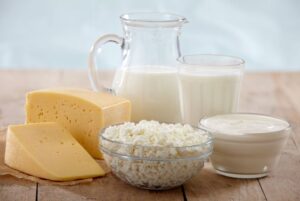
The dairy industry, which is one of the key sectors of Ukraine’s agricultural sector, has retained its production base and is gradually recovering despite the full-scale war, Deputy Minister of Economy, Environment, and Agriculture Taras Vysotsky said at the XVII All-Ukrainian Conference “Dairy Business-2025” in Kyiv on Thursday.
The deputy minister noted that in January-October 2025, Ukraine produced almost 5.9 million tons of milk.
“An important trend is the growing role of agricultural enterprises: they already account for 45% of production, and their production volumes have increased by 7.6%, despite the overall reduction in livestock numbers. Quality is also improving: more than 55% of milk sent for processing meets the European ‘extra’ standard,” he wrote on Facebook.
Vysotsky emphasized that the industry is also actively working in foreign markets. In the first 10 months of 2025, exports of dairy products grew by almost 9%. Sixty-four Ukrainian companies have permission to export dairy products to the EU, 40 of which are milk processing plants.
“Despite the challenges, we are maintaining the stability of current indicators and forming a resource for further growth – this is our realistic and strategic focus. The next step is investment, modernization, and a clear move towards integration with the European market,” the deputy minister concluded.
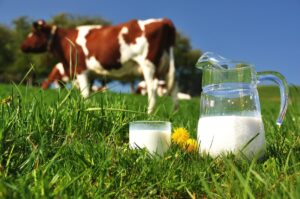
Industrial dairy farming in Ukraine continued to recover in 2025, with the number of cows on farms and individual enterprises increasing by 2.3% and raw milk production increasing by 7.6% over 10 months, according to the Ukrainian Dairy Industry Association (UDIA).
“This year, dairy farms will produce 0.2 million tons of milk more than in 2024, and milk supplies for processing will exceed 3.6 million tons (compared to 3.2 million tons last year). These results were made possible by favorable prices in 2023-2024, which stimulated active investment in the construction and expansion of farms,” the business association noted.
The SMPU noted that the situation worsened in the fall due to a sharp drop in world prices: butter in the EU fell in price by more than 30%, cheese by almost a quarter, and the price of dry milk fell significantly. This led to a decline in purchase prices for raw milk worldwide: FrieslandCampina has lowered them by almost 25% since August; prices have fallen in the US, New Zealand, and Mercosur countries. Since November, the decline has also significantly affected Ukraine, and it will continue in winter.
Globally, the low cost of raw materials could lead to bankruptcies among small farms, especially in the EU. Ukraine has a certain advantage in this situation, as it follows the “American model” with large dairy farms (averaging 300+ cows), modern technologies, its own feed base, and lower credit burdens.
“After the end of the price crisis, which is estimated to last until spring 2026, the global supply of milk will decline and prices will begin to recover. This will create new opportunities for the entire Ukrainian dairy sector, both milk suppliers and processors,” emphasized the association of dairy producers.
The SMPU called on milk suppliers to work together to develop long-term contracts.
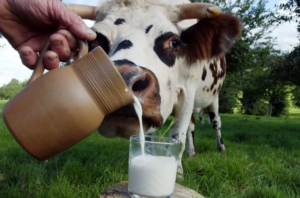
According to the 7SDA forecast, total milk production in Ukraine will decline even further in 2026 due to a decrease in the number of cows, problems with industrial production related to the war, and inefficient household production. This forecast was made by analysts of the US Department of Agriculture (USDA).
Milk production in Ukraine in 2026 is estimated at 6.8 million tons, which is 4% less than this year (7.1 million tons).
At the same time, consumption of dairy products in the country is expected to grow slightly next year, while the growth of Ukrainians’ incomes is offset by the outflow of population.
USDA forecast for production and trade of certain types of products
Cheese
production: 139 thousand tons (+4 thousand tons)
exports: 20 thousand tons (+4 thousand tons)
imports: 45 thousand tons (+2 thousand tons)
Butter
production: 73 thousand tons (+1 thousand tons)
exports: 14 thousand tons (+1 thousand tons)
The growth was driven by expected high demand on international markets and good production profitability.
Skimmed milk powder
production: 33 thousand tons (+1 thousand tons)
exports: 24 thsd tonnes (+1 thsd tonnes).
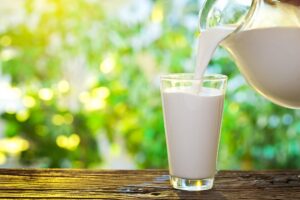
In August 2025, farms of all categories produced 640,000 tons of raw milk, which is 23,000 tons less (-3%) than in July 2025 and 72,000 tons less (-10%) than in August 2024, according to the Milk Producers Association (MPA) citing data from the State Statistics Service.
The industry association specified that in January-August 2025, milk production in Ukraine amounted to 4.69 million tons, which is 239 thousand tons less (-5%) than in the same period last year. In August, enterprises accounted for 42% of raw milk production, while private farms accounted for 58%.
Enterprises produced 268,000 tons of raw milk in August 2025, which is only 1,000 tons less (-0.3%) compared to July 2025, but 18,000 tons more (+7%) compared to August 2024. In January-August 2025, commercial dairy farms produced 2.1 million tons of raw milk, which is 116 thousand tons more (+6%) than in the same period last year.
In private households, milk production in August 2025 amounted to 372,000 tons, which is 22,000 tons less (-6%) than in July 2025 and 90,000 tons less (-19%) than in August 2024. In January-August this year, the private sector produced 2.59 million tons of raw milk, which is 355 thousand tons less (-12%) than in the same period last year.
In January-August 2025, dairy farms increased raw milk production in 15 regions of Central and Western Ukraine. The AVM noted that agricultural enterprises in Zakarpattia region (+29%), Lviv region (+22%), and Khmelnytskyi region (+21%) increased their raw milk production the most compared to the same period last year. The consequences of the war and relocation affected the decline in raw milk production in January-August 2025 at dairy farms in such frontline regions as Zaporizhzhia (-11%), Dnipropetrovsk (-5%), Sumy (-4%), and Kharkiv (-3%) regions.
“Despite Russian missile and bomb strikes, relocation, and rising production costs, the growth rate of raw milk production in Ukraine’s industrial sector since the beginning of 2025 has been one of the best in Europe and the world. In particular, the growth rate of milk yield during this period in the US and New Zealand was +1.4%, while the EU reduced its raw milk production by 0.3%. Although milk yields on dairy farms in August were mostly stable and generally in line with July 2025 levels, the weather this summer was more favorable than last year, and fans were installed on farms to improve cow comfort and prevent heatstroke. This year, we managed to avoid a significant drop in milk production, unlike in the summer of 2024,” said Georgiy Kukhaleishvili, an analyst at the association.
At the same time, according to the business association, milk production in private farms continued to decline on an annual basis.
“It is likely that if private farms do not consolidate by 2030, their milk will no longer be sent for processing and will be used for their own consumption. The work of new dairy farms in western Ukraine will compensate for the reduction in milk production in the eastern and southern regions of Ukraine due to ongoing military operations,” the AVM emphasized.
According to the industry association, the factors that may force agricultural enterprises to refrain from further increasing raw milk production according to the industry association, are the decline in world prices for exchange-traded commodities, weak demand in the domestic market, a reduction in supplies to foreign markets due to the suspension of exports to the EU after the exhaustion of quotas, and increased competition from Russian and Belarusian suppliers in the markets of post-Soviet countries, the industry association believes.
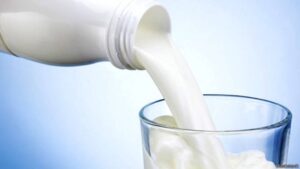
The volume of raw milk supplied for industrial processing in January-June 2025 exceeded 1.8 million tons, which is 10.6% more than in the same period of 2024 and 19.3% more than in the same period of 2023, according to the Ukrainian Dairy Industry Association (UDIA).
The industry association emphasized that the growth rate of raw milk purchases from enterprises in the first half of 2025 decreased to 6% compared to 12.6% in the first half of 2024.
“Raw milk supplies from private farms amounted to less than 94,000 tons,” the UDAU stated.
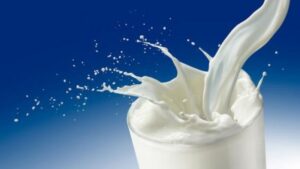
In June 2025, farms of all categories produced 657,000 tons of raw milk, which is 28,000 tons (-4%) less than in May 2025, but 47,000 tons (-7%) less than in June 2024, according to the Association of Milk Producers (AMP) citing data from the Ministry of Economy.
The industry association noted that in January-June 2025, milk production in Ukraine amounted to 3.39 million tons, which is 179,000 tons (-5%) less than in the same period last year. In June 2025, the share of enterprises in raw milk production was 39%, and that of private households was 61%.
At the same time, enterprises produced 257,700 tons of raw milk in June 2025, which is 12,400 tons (-4.6%) less than in May 2025, but 5,000 tons (+2%) more than in June 2024. In January-June 2025, dairy farms produced 1.56 million tons of raw milk, which is 63 thousand tons more (+4%) than in the same period last year.
In June 2025, milk production in private households amounted to 400,000 tons, which is 16,000 tons (-14%) less than in May 2025 and 53,000 tons (-12%) less than in June 2024. In January-June 2025, the household sector produced 1.82 thousand tons of raw milk, which is 242 thousand tons less (-12%) than in the same period last year.
The AVM noted that milk production increased the most in the Lviv (+21%), Zakarpattia (+20%), Khmelnytskyi (+17%), Mykolaiv (+13%), and Ternopil (+10%) regions compared to the same period last year.
“The growth rate of raw milk production in the industrial sector of Ukraine since the beginning of 2025 has been one of the best in Europe and the world. (..) Dairy farms increased milk production despite Russian missile and bomb strikes, relocation, and rising production costs. However, despite the increase in production in the industrial sector, milk yields in private farms continue to decline on an annual basis. It is likely that if private farms do not consolidate by 2030, their milk will no longer be sent for processing and will be used for their own consumption,” said Georgiy Kukhaleishvili, an analyst at the association.
In January-June 2025, dairy farms increased raw milk production in 14 regions. The regions of Central and Northern Ukraine remain the leaders in terms of raw milk production. However, the largest growth in raw milk production is observed in the Lviv, Zakarpattia, and Khmelnytskyi regions, which is associated with the construction of new dairy farms in western Ukraine. They compensate for the reduction in milk yield in the eastern and southern regions of Ukraine due to ongoing military operations.
At the same time, raw milk production at dairy farms in Ukraine is held back by the unwillingness of milk processing companies to buy it at a fair price as farmers’ production costs go up, according to the industry association.
“Domestic milk processing enterprises with outdated technology are unable to compete on quality with enterprises in developed countries. Therefore, they are not ready to buy raw milk at adequate prices, as they sell their products at lower prices to remain competitive in export markets,” the AVM emphasized.
Uncertainty in the market also prevents dairy farms from significantly increasing milk production in the future. After the European Commission canceled autonomous trade measures (ATMs) in June, Ukraine and the EU revised their trade agreement, agreeing on new quotas for Ukrainian dairy exports, provided that Ukraine gradually transitions to EU standards by 2028. However, the new document has not yet been signed due to the position of Hungary, Poland, Romania, Bulgaria, and Slovakia on customs duties and quotas for Ukrainian grain, which are also stipulated in the agreement.
“There is a risk that exports of dairy products from Ukraine to the EU will be suspended next month if the new conditions do not come into force in the near future. In such a scenario, exports of exchange-traded goods to the EU will be suspended, demand for milk from processors may decline, and the emergence of surpluses will negatively affect prices,” the AVM concluded.